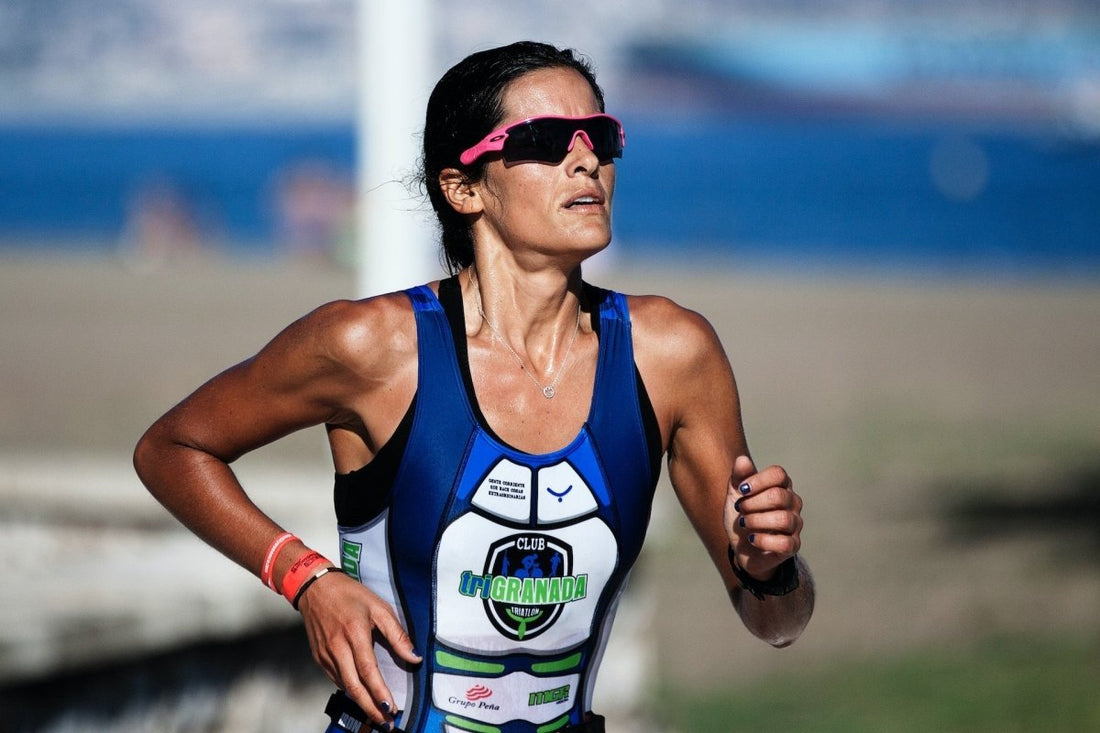
How to Recover from a Long Run?
Share

Running can yield many health benefits for the body. In fact, even a five to 10-minute run every day at slow speeds can reduce cardiovascular risk, based on a study involving 55,000 runners ages 18 to 100. <1>
Not only your heart will love it, but your lungs will, too. It has been associated with improved circulation, increased lung function, and better oxygen intake. <2>
However, it can also be physically taxing, especially after a long run. From lost toenails to strained or pulled tendons to knee injuries, the list of dangers of hitting the pavement too hard go on.
But that doesn’t mean you should stop running. You simply have to get your sore muscles back to normal and don’t. So, here are long run recovery tips to keep up with your training and the reasons why recovery after a long run is so important.
Why You Need Rest and Recovery After a Long Run

Post-run rest and recovery are physically necessary for the muscles to strengthen, rebuild, and repair. Engaging in active recovery and building in rest days also creates a good balance between home, fitness goals, and work.
A study involving 46 recreational male runners showed that recovery can relieve the effects of muscle fatigue after a strenuous workout.
<3>
The study found that some of the best recovery interventions include nutritional strategies, massage, cold water immersion, and active recovery.
Proper post-run recovery prevents injuries, including strained tendons and stress fractures. It also improves your overall performance as you bounce back and reduce the soreness in your legs.
Essential Long Run Recovery Tips
1. Hydration
You most likely lost a lot of sweat during your long run. So, rehydrate within the first 10 to 15 minutes after stopping. Consume as much liquid as your body weight in ounces during your recovery period.
Even if the temperature is cold, you will still sweat when you run, and you need to replace that fluid loss. More so if you run in the summer.
You can also opt for a sports drink, which gives your body the sugars and electrolytes needed to replace what was lost during the run.
Chocolate milk and protein smoothies are other convenient choices to replenish depleted glycogen levels, fluids, sodium, and electrolytes in the body. If you’re going to consume sugar, this post-run is the time to have it.
2. Cool Down by Walking
Immediately sitting down after a long run is one of the worst things you can do to your body. If you do, you will immediately stop using your leg muscles, and your body won’t pump as much blood from the veins back to the heart.
Your blood pressure can drop, and you may pass out. So, the best thing you can do to immediately recover after a long run is to walk.
How it speeds up the recovery process
Walking by a short distance after a long run gives your legs enough time to cool down before you stop the movement altogether.
3. Gentle Muscle Stretch
A gentle muscle stretch is good within 25 to 30 minutes after your run. Focus on the major muscle groups, such as the calves, hips, hamstrings, and quads. You can also stretch any muscle that feels sore after the run, which should last 10 to 15 minutes.
4. Ice Bath

If your long run was very high in intensity or mileage, an ice bath can be an excellent recovery tool.
Fill your bathtub with cold water or add ice until it is between 55 to 60 degrees Fahrenheit. The ice should be completely melted. Grab your favorite magazine and a towel and submerge your lower body to your hips in the water. The trick of this recovery tip is to survive the temperature in the first three minutes.
It can be difficult at the start. But after three minutes, you’ll notice that your body can relax a little. Stay in the tub for 10 to 15 minutes. After which, you can take a shower. The more ice baths you do, the more comfortable the process becomes.
5. Well-Balanced Food

One to two hours after your run, it’s time to talk about recovery foods. Nourish your body with a healthy complex of proteins, fats, and carbohydrates. Food is a big motivator for some long-distance runners to finish their run. So, you may want a splurge.
You can surely treat yourself an hour or two after your run. However, don’t just load up on junk foods or a post run snack. Opt for whole or healthier foods to give your body the right nutrients to burn off during the run.
Some of runners’ best complex carbs sources are beans, peas, brown rice, sweet potatoes, and lentils. Other good high-protein sources are lean meat, yogurt, fish, and eggs.
6. Nap and Sleep
If you’ve just completed a half marathon or a hard workout, you can take a nap after eating your meal.
You may think the idea is ridiculous, as naps are an extreme luxury during this time. Still, it should be a part of your “optimal” recovery guide.
At night, get plenty of sleep too. Many people overlook the importance of this step for a healthy recovery after a marathon. However, it will give the body the best chance to rebuild and repair. As such, make sure you get up to eight to nine hours of sound sleep, especially during training periods.
7. Legs Up
This recovery pose helps reverse the usual actions in your lower body after marathon training or even just standing or sitting all day.
Elevating your legs up the wall will make circulation easier to the other parts of your body. It likewise aids your overall recovery as it drains the fluids pooling in your legs. In doing so, it prevents soreness or swelling in the next hours or days.
This pose similarly stretches your hamstrings and is very helpful if you feel dizzy after a hard workout.
8. Foam Roll
Once your body is more relaxed and has already cooled down, you can use a foam roller on your legs. This lightweight, cylindrical tube increases flexibility, reduces muscle soreness, and eliminates muscle knots. It also helps increase blood flow.
Some of the best foam rolling exercises for most runners target the back and inside your calves. It also targets behind the knee and on its side, glutes, and the hamstrings (notoriously tight for runners).
9. Massage

Many athletes, not just runners, include massage in their training to aid recovery and reduce muscle soreness.
Sports massage is another relaxing way to care for your body and promote muscle repair after running. It also effectively manages anxiety, stress, soft tissue injuries, and delayed onset muscle soreness (DOMS).
10. Ease Back Into Activity
After a one or three-day rest, it’s ideal for easing back into activity. Start with active recoveries, like a walk, and gradually increase the intensity as your body can handle it.
Before diving back into speed sessions or tough workouts, try an easy cross-training or run first when it feels comfortable.
Get another round of stretching too. It shouldn’t stop the day after your long run because you may still have lingering muscle soreness. Include some aqua jogging or a short walk in your recovery plans too.
Running a “Recovery Run”
Recovery runs are runs after intense, hard, or long workouts. They are performed within 24 to 48 hours after an intense quality run (hill workout or interval training) or a long run.
This kind of run is done at a slower pace, normally about 60 to 90 seconds slower than your normal running pace.
Running a recovery run also teaches that your body can still run in a state of fatigue, which will be very important in the later stages of the marathon. It also builds your mental endurance and increases your running fitness level.
They are effective in helping your body recover and repair faster, allowing you to run at a higher or same level the next time you go for a long run.
What Not To Do After A Long Run: Avoid These 4 Mistakes
- Eat too much after a long run or an intense workout
- Stay in your wet running clothes
- Be a couch potato (doing nothing)
- Strain yourself for the rest of the day
Half Marathon Recovery Plan
A good recovery plan should comprise two parts: the passive recovery phase and an active recovery phase.
Passive recovery phase (lasts one to three days)
For the half-marathon distance race, allot one to three days of passive recovery. You rest, but this doesn’t mean you become a couch potato. It’s enough that you do activities of daily living.
It’s also a great time to assess your training plan and your previous performance.:
- Were you prepared for the demands of the race?
- Is there anything you want to improve more?
- Were you fatigued?
- How was your strength?
- How did your running form and posture hold up?
- Were you ready for the challenges?
- Did your nutrition help optimize your running?
Answer these questions, and it’ll help you design a training plan to improve your weakness and build upon your strengths. During the passive recovery phase, it’s also a great time to register for your next event.
Active recovery phase (lasts seven to 10 days)
The next phase is active recovery. It’s when you exercise at a shorter duration or at a lower intensity than your training regimen. Stick to an hour or less, a low to moderate perceived exertion level, and a 60 to 75% of max heart rate.
During the active recovery phase, your goal should be to stimulate circulation in your body to provide nutrients to the soft tissue cells and remove waste products to speed up healing. This recovery phase lasts about seven to 10 days. Adding that up to the one or three-day passive recovery, you’ll have a total recovery period of eight to 13 days.
Perfect Your Post-Run Routine

Long-distance running gives you peace, clarity, fulfilment, and a bit of soreness. Don’t worry, though, as you can jumpstart your healing and recovery process the soonest time possible.
Follow the recovery tips we shared above for your body to heal and adjust to the stress of high mileage.
Most of all, the most important thing you can do is to listen to your body. Know its cues and adjust your recovery process and timeline based on those signals.
Eventually, you’ll gain endurance, strength, and mental toughness. Before you know it, you’re again ready to overcome more miles.
Good luck on your next race day.
Running is a high-impact workout. It strains your ligaments, tendons, and muscles over time and put your body at greater risk of injury.
Accelerate your muscle recovery and shorten downtime by applying CarnoSport. It’s a doping-free sports gel containing carnosine, which has the ability to improve sports or exercise performance to health. <4>
Recommended For You:
- Lower Back Pain After Running – What Are the Causes and How To Heal?
- Knee Pain When Squatting – Why and How To Heal?
- L-Carnosine Bodybuilding Benefits
References:
<1> https://www.ncbi.nlm.nih.gov/pmc/articles/PMC4131752/
<2> https://www.ncbi.nlm.nih.gov/pmc/articles/PMC4818249/
<3> https://www.ncbi.nlm.nih.gov/pmc/articles/PMC6226207/
<4> https://www.sciencedirect.com/science/article/pii/B978012813922600028X

